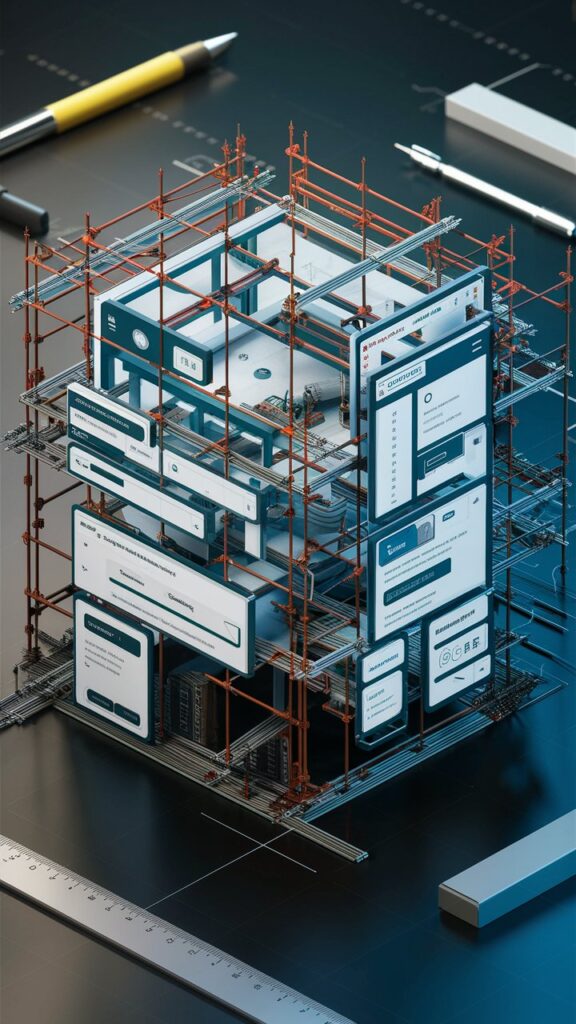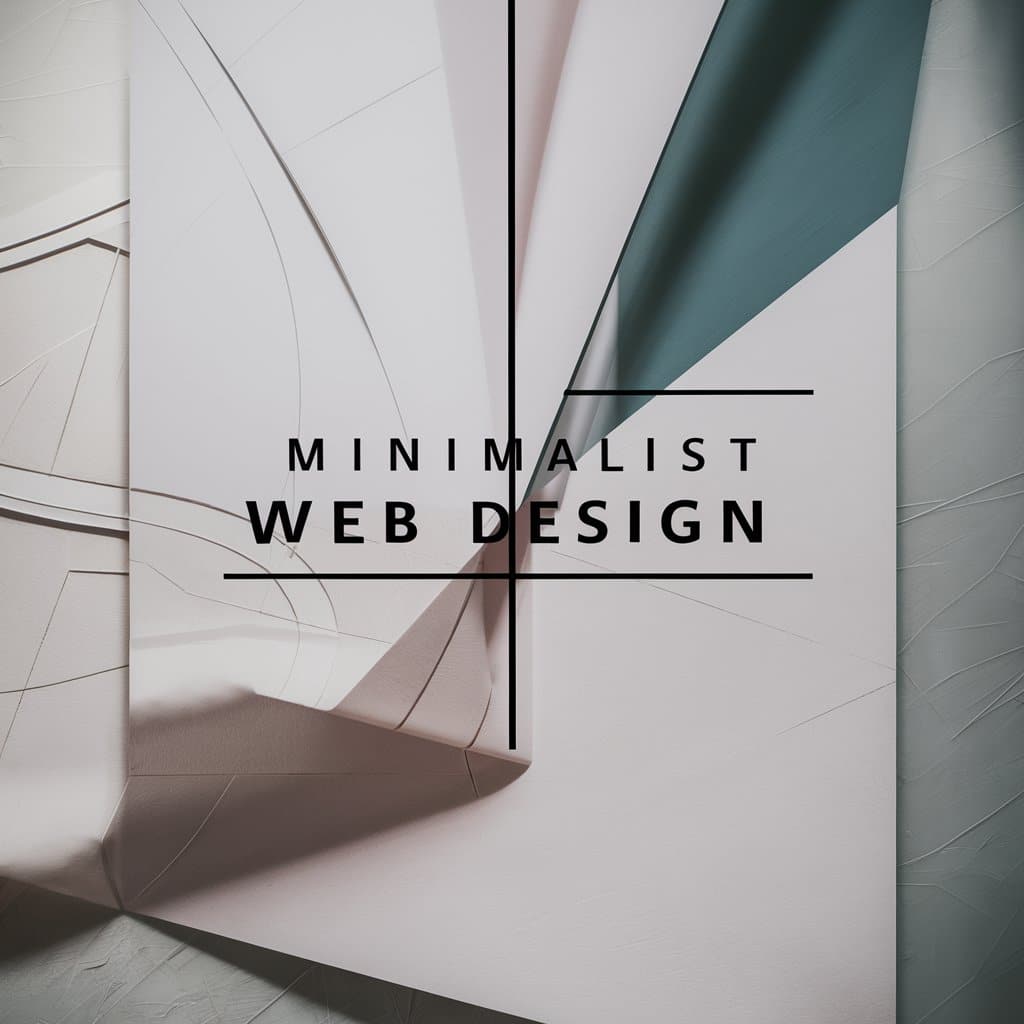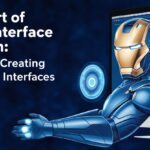Web design is an ever-changing field, where trends come and go with the blink of an eye. While it’s important to stay up-to-date with the latest design trends, it’s equally important to balance trendiness with timelessness. A website that’s too trendy may quickly become outdated, while a website that’s too timeless may come across as outdated or boring.
When it comes to balancing trendiness with timelessness in web design, it’s important to strike the right balance. This means incorporating design elements that are current and modern, while also incorporating design elements that are classic and timeless. By doing so, a website can be both visually appealing and long-lasting.
Ultimately, the goal of balancing trendiness with timelessness in web design is to create a website that is both visually appealing and functional. By incorporating both trendy and timeless design elements, a website can stand the test of time while also staying current and relevant in the ever-changing world of web design.
Understanding Trendiness and Timelessness
In web design, balancing trendiness with timelessness is essential to create a website that remains relevant for years to come. Understanding the concepts of trendiness and timelessness is crucial to achieve this balance.
Design Trends
Design trends are the popular styles and aesthetics that define a particular era. These trends are usually short-lived, and their popularity fades away as new trends emerge. Following design trends can make a website look modern and fresh, but it can also make it look outdated quickly.
Timeless Design
Timeless design, on the other hand, is a design that remains relevant and aesthetically pleasing for a long time. Timeless design is not about following the latest trends, but rather about creating a design that is functional, simple, and elegant. Timeless design is also about creating a design that is easy to use and navigate.
Nostalgia
Nostalgia is a powerful emotion that can evoke feelings of comfort and familiarity. Nostalgia in web design can be used to create a sense of familiarity and trust with users. However, nostalgia should be used sparingly, as too much nostalgia can make a website look outdated.
To achieve a balance between trendiness and timelessness, web designers should focus on creating a design that is functional, simple, and elegant. They should also avoid following every design trend and focus on creating a design that is unique and stands out from the crowd. By balancing trendiness with timelessness, web designers can create a website that remains relevant and aesthetically pleasing for years to come.
The Role of Art and Technology in Web Design
Web design is an art form that has evolved over time with the integration of technology. The use of art and technology in web design has a significant impact on the overall aesthetic and functionality of a website. In this section, we will explore the influence of art and technology on web design.
The Influence of Art on Web Design
Art has played a significant role in web design since its inception. The use of colour, typography, and imagery can make a website stand out and create a memorable experience for users. The use of art in web design can also evoke emotions and convey a message to the user.
Web designers often draw inspiration from various art movements such as Art Deco, Bauhaus, and Minimalism. These art movements have influenced web design trends over the years, resulting in unique and visually appealing websites.
The Impact of Technology on Web Design
Technology has revolutionised web design, allowing designers to create dynamic and interactive websites. The use of Artificial Intelligence (AI) and Augmented Reality (AR) has opened up new possibilities for web design.
AI can be used to personalise a user’s experience on a website by providing recommendations based on their preferences. It can also be used to automate certain tasks such as chatbots and customer service.
AR can be used to create an immersive experience for users, allowing them to interact with a website in a more engaging way. AR can be used to showcase products in a virtual environment, giving users a better understanding of the product before purchasing.
In conclusion, the use of art and technology in web design has a significant impact on the overall aesthetic and functionality of a website. The integration of art and technology has resulted in unique and visually appealing websites that provide a memorable user experience.
Key Elements of Web Design
When designing a website, it is important to strike a balance between trendiness and timelessness. This can be achieved by incorporating key elements of web design that are both aesthetically pleasing and functional. In this section, we will explore the most important elements of web design that help achieve this balance.
Design Systems and Typography
Design systems are a set of rules, principles, and guidelines that help ensure consistency in design across a website. They include elements such as typography, colour schemes, spacing, and layout. Typography, in particular, is an important element of web design as it can greatly affect the readability and overall visual appeal of a website. Choosing the right typeface and font size can make a website look modern and trendy while also ensuring it remains timeless.

User Interface and Navigation
User interface (UI) and navigation are crucial elements of web design as they determine how users interact with a website. A well-designed UI and navigation system can make a website easy to use and navigate, while also making it visually appealing. Key elements of UI and navigation include the use of clear and concise labels, intuitive icons, and easily identifiable buttons.
Responsive and Immersive Design
With the increasing use of mobile devices, it is important for websites to be designed with responsiveness in mind. Responsive design ensures that a website is optimised for different screen sizes and devices, making it accessible to a wider audience. Immersive design, on the other hand, focuses on creating an engaging and interactive experience for users. This can be achieved through the use of animations, videos, and other multimedia elements.
In conclusion, achieving a balance between trendiness and timelessness in web design requires careful consideration of key elements such as design systems, typography, UI and navigation, and responsive and immersive design. By incorporating these elements into their designs, web designers can create websites that are both visually appealing and functional.
The Shift Towards Minimalism and Simplicity
Web design has evolved significantly over the years, and one of the most significant trends in recent years has been the shift towards minimalism and simplicity. Minimalist design is a style that emphasizes simplicity and the use of few elements to create a clean and uncluttered look. This design style has become increasingly popular in recent years due to its ability to create a timeless look that is both elegant and functional.
One of the main benefits of minimalist design is its ability to create a clean and uncluttered look that is easy to navigate. This is achieved by using a limited number of elements and focusing on the essentials. The use of white space is also an important aspect of minimalist design, as it helps to create a sense of balance and harmony on the page.
Another benefit of minimalist design is its ability to create a timeless look that is not tied to any particular trend or style. This is because minimalist design is based on the principles of simplicity and functionality, which are timeless and will never go out of style.

Overall, the shift towards minimalism and simplicity in web design is a positive trend that is here to stay. It creates a clean and uncluttered look that is easy to navigate and is not tied to any particular trend or style. By embracing this trend, web designers can create websites that are both elegant and functional, and that will stand the test of time.
The Evolution of Web Design Trends
Web design trends have come a long way since the early days of the internet. From the early days of skeuomorphism, where digital interfaces mimicked real-world objects, to the current trend of flat design, where minimalism and simplicity rule, web design has evolved significantly over the years.
From Skeuomorphism to Flat Design
Skeuomorphism was a popular trend in web design in the early 2000s. It involved designing digital interfaces to look like real-world objects, such as buttons that looked like physical buttons, or icons that resembled real-life objects. However, this trend eventually fell out of favour due to its lack of practicality and the rise of mobile devices.
Flat design emerged as a response to the limitations of skeuomorphism. This design trend emphasises simplicity, minimalism, and clarity. Flat design is characterised by the use of simple shapes, bold colours, and clean typography. It has become a popular trend in recent years due to its flexibility and ability to adapt to various devices and screen sizes.
The Rise of Dark Mode and Muted Colours
Dark mode is a relatively new trend in web design that has gained popularity in recent years. It involves designing interfaces with dark backgrounds and light text, as opposed to the traditional light background and dark text. Dark mode has become popular due to its ability to reduce eye strain and improve readability, especially in low-light environments.
Muted colours are another trend that has gained popularity in recent years. Muted colours are less saturated and less intense than their brighter counterparts, creating a more subdued and calming effect. Muted colours are often used in combination with dark mode to create a sophisticated and elegant look.
The Trend of Custom Cursors and Microinteractions
Custom cursors and microinteractions are small design elements that can make a big impact on user experience. Custom cursors are unique cursor designs that can add personality and character to a website. Microinteractions are small, interactive design elements that provide feedback to users and add a sense of interactivity to a website.
Custom cursors and microinteractions are becoming increasingly popular in web design due to their ability to enhance user engagement and create a more immersive experience. They are often used in combination with other design trends, such as dark mode and muted colours, to create a cohesive and visually appealing website.
The Importance of Accessibility and Performance
Web designers must balance the trendiness of their designs with the timelessness required for a website to remain relevant. However, it is important not to sacrifice accessibility and performance in the process. Accessibility refers to the design of a website that can be used by people with disabilities. Performance refers to the speed and reliability of a website.
Accessibility is a crucial aspect of web design that should not be overlooked. According to a study by ScienceDirect, web designers must keep the accessibility/popularity balanced within the website. This means that while incorporating trendy design elements, designers must ensure that the website remains accessible to people with disabilities. This can be achieved by using alt tags for images, providing transcripts for videos and audio, and using clear and concise language.
Performance is equally important in web design. Slow-loading websites can lead to a loss of traffic and revenue. A study by ScienceDirect suggests that the timeliness of the information on the website can affect its performance. Therefore, designers must ensure that the website is optimized for speed and reliability. This can be achieved by compressing images, minimizing HTTP requests, and using a Content Delivery Network (CDN).
In conclusion, web designers must balance trendiness with timelessness while ensuring that their designs remain accessible and performant. This can be achieved by incorporating accessibility and performance into the design process from the outset. By doing so, designers can create websites that are both trendy and timeless, while providing a positive user experience for all users.
The Impact of Design on Digital Products
Digital products are becoming increasingly important in the modern world. From mobile applications to websites, digital products are used by millions of people every day. As such, it is essential that digital products are designed to be user-friendly, visually appealing, and efficient.
Product design is a critical aspect of creating digital products that are both functional and aesthetically pleasing. A well-designed product can make all the difference in terms of user experience and customer satisfaction. A designer must consider various aspects of product design, including the balance between trendiness and timelessness.
A designer must balance the latest design trends with timeless design elements to create a product that is both modern and classic. In doing so, the designer creates a product that will not become outdated quickly. A product that is too trendy may become outdated in a few years, while a product that is too timeless may be perceived as outdated.
A portfolio of digital products that are well-designed and balanced between trendiness and timelessness can help establish a designer’s reputation. A well-designed portfolio can showcase the designer’s skills and abilities, demonstrating their ability to create products that are both visually appealing and user-friendly.
In summary, the impact of design on digital products is significant. A well-designed product can make all the difference in terms of user experience and customer satisfaction. A designer must balance the latest design trends with timeless design elements to create a product that is both modern and classic. A portfolio of well-designed digital products can help establish a designer’s reputation and showcase their skills and abilities.
The Future of Web Design
Web design has come a long way since the early days of the internet. As technology continues to evolve, web designers must keep up with the latest trends and technologies to stay ahead of the curve. In this section, we will explore the future of web design, including the role of no-code tools and the emergence of augmented reality (AR) in web design.
The Role of No-Code Tools
No-code tools are becoming increasingly popular in web design. These tools allow designers to create websites and web applications without having to write any code. This is a game-changer for designers who are not proficient in coding, as it allows them to focus on the creative aspects of web design.
No-code tools also make it easier for designers to collaborate with developers. Designers can create the design and layout of a website using a no-code tool, and then hand it over to the developer to add the necessary functionality. This streamlines the development process and ensures that the final product is exactly what the designer had in mind.
The Emergence of AR in Web Design
Augmented reality (AR) is another technology that is set to revolutionize web design. AR allows designers to create immersive experiences that blend the physical and digital worlds. This technology is particularly useful for e-commerce websites, as it allows customers to try on clothes or see how furniture would look in their home before making a purchase.
AR can also be used to create interactive educational experiences. For example, a history website could use AR to bring historical events to life, allowing users to explore a virtual recreation of a famous battle or event.
In conclusion, the future of web design is exciting and full of possibilities. No-code tools and AR are just two of the many technologies that will shape the future of web design. As designers continue to experiment with these technologies, we can expect to see more innovative and engaging websites and web applications in the years to come.







